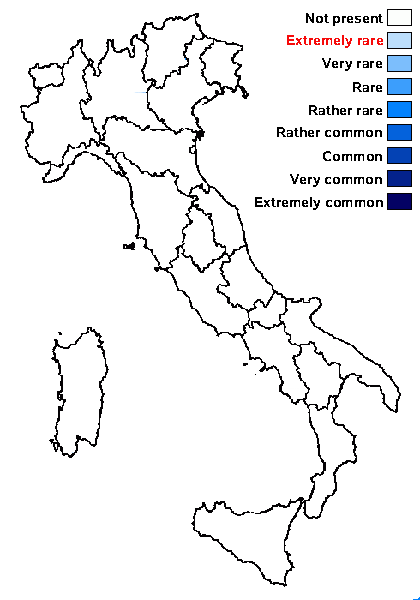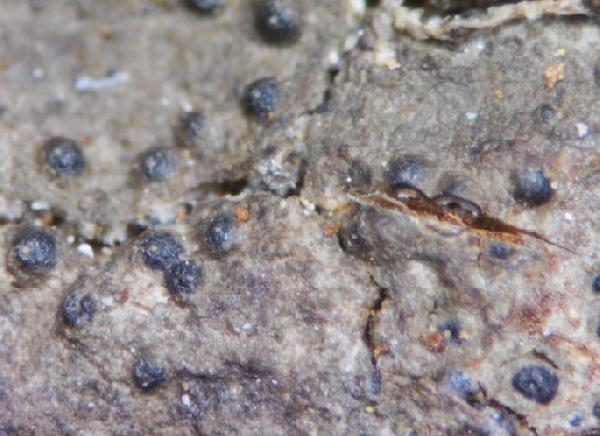Verrucaria ulmi Breuss
Linzer biol. Beitr., 26, 2: 645, 1994
Synonyms:
Distribution:
Description: Thallus crustose thinly episubstratic, blackish, consisting of small, more or less confluent flecks, thinner in marginal parts, without a distinct prothallus. Thallus sections 20-50 µm thick, filled by photobiont cells, only the uppermost 1-2 layers of cells dark-pigmented. Perithecia black, hemispherically projecting, up to 0.3(-0.35) mm across, with a thin thalline cover on the flanks. Involucrellum closely adhering to exciple, c. 25 µm thick, fully surrounding the perithecium, but the lowermost part often reduced to fleck-like blackenings. Exciple at first pale, then turning blackish; hamathecium of c. 25 µm long periphyses and periphysoids, interascal filaments absent; hymenial gel hemiamyloid. Asci 8-spored, narrowly clavate, I-, fissitunicate, the wall thickened above, with an ocular chamber, dehiscent by extrusion of an endotunica to form a delicate rostrum, Verrucaria-type, 80-90 x 24-28 µm. Ascospores 1-celled, hyaline, ellipsoid, 25-30 x 9-11 µm, the content richly guttulate. Photobiont chlorococcoid. Spot tests: K-, C-, KC-, P-, UV-. Chemistry: without lichen substances.Note: on base-rich bark of deciduous trees (e.g. Ulmus), with a few records, all from Central Europe, including the Eastern Alps (Austria). To be looked for in Italy.
Growth form: Crustose
Substrata: bark
Photobiont: green algae other than Trentepohlia
Reproductive strategy: mainly sexual

Predictive model
Growth form: Crustose
Substrata: bark
Photobiont: green algae other than Trentepohlia
Reproductive strategy: mainly sexual

Predictive model


